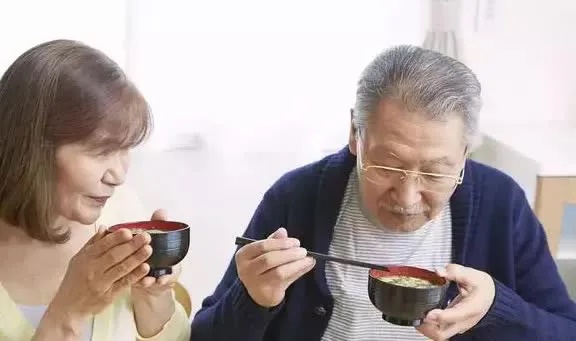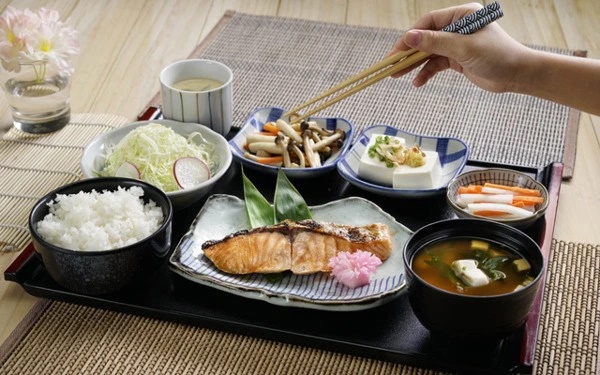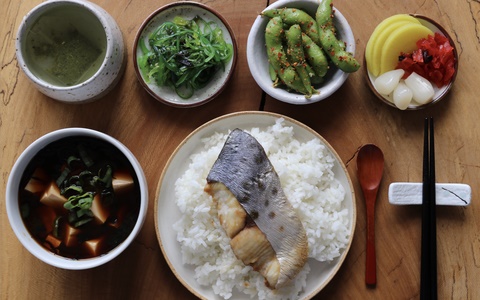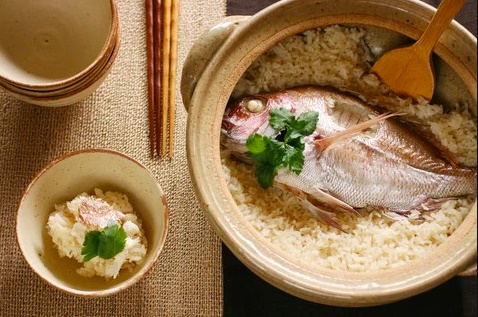Why is there such a difference? The answer is that they have 3 ways to eat rice that other countries rarely have.
Associate Professor Fan Zhihong (School of Food Science and Nutritional Engineering of China Agricultural University) shared: Diabetes is a disease originating from many different causes. Some people are affected by genetic factors, but there are also people who regularly eat foods high in sugar, fat, starch… without exercising.
White rice has long had a reputation for causing obesity and diabetes. However, in Japan people eat rice every day but their obesity and diabetes rates are not high. In particular, this country is one of the countries with the lowest obesity rate in the world and the highest average life expectancy in the world.

Why is there such a difference? The answer is that they have 3 ways to eat rice that other countries rarely have.
1. Japanese people eat rice with light dishes
Japanese people eat rice regularly at every meal, but the “key” to them not gaining weight is that the amount of rice in a meal is not too much. Instead, they eat more side foods, the amount of rice they eat is usually only about 100g.
Furthermore, their food is quite bland, rarely seasoned with sugar or salt. They even eat raw vegetables and fish because they want to retain the best nutrition from food.
In Japan, food plates are often quite small in size, which unintentionally causes them to consume less food.
2. Eat rice at low temperature
Unlike us who usually like to eat hot dishes, in Japan we mainly consume cold rice in the form of sushi and rice balls. The Japanese believe that cold rice contains resistant starch, like fiber. This substance is not easy to digest, and when it enters the body, it will slow down the absorption of glucose in the body. Therefore, blood sugar levels will not increase too quickly, helping to stabilize blood sugar levels.

Chief physician Zheng Peifen (Director of the Department of Gastroenterology of Zhejiang Hospital) has pointed out that: Eating cold rice and cold foods helps delay the increase in blood sugar and lipid levels after meals, helping to improve the microflora. intestinal bacteria and is more beneficial for intestinal health.
However, it should be noted that rice left at room temperature for a long time can be contaminated with bacteria, eating this type of rice will increase the risk of food poisoning.
3. Japanese people often cook rice mixed with vinegar
After cooking rice, Japanese people often mix rice with vinegar to make sushi, rice balls or to add flavor to the rice. Acetic acid in vinegar can inhibit amylase activity and slow down the conversion of starch into glucose. According to the Japanese, adding vinegar to rice can cause blood sugar levels to increase more slowly.

In addition, one thing that few people pay attention to is that although Japanese people eat a lot of rice, their sense of exercise is very high, which helps them prevent obesity and diabetes. According to statistics from the World Health Organization, more than 98% of Japanese children walk or bike to school. In particular, many Japanese people love the method of “walking 10,000 steps a day” and some studies suggest that this is also one of the factors that determine their longevity.
How can diabetics eat rice?
Ruan Guanfeng (Chinese Association of Preventive Medicine), pointed out that although eating rice regularly will increase the risk of diabetes, it does not mean that people with diabetes cannot eat rice at all.
If they want to eat healthy rice, they need to pay attention to the following:
1. Don’t cook rice too soft
Although soft rice is delicious, it is also easier to digest, blood sugar levels increase quickly after a meal.
2. Add brown rice and whole beans when cooking the rice
Regularly eating white rice will quickly increase blood sugar levels, so patients should add brown rice, green beans, red beans and other coarse grains to rice when cooking to reduce the blood sugar reaction.
3. You should eat rice during the day and avoid reheating it multiple times
It’s best not to cook too much rice at once. Boiling multiple times will make the rice softer, easily causing blood sugar levels to increase. It’s best to eat it on the day of cooking.

4. Consume moderate amounts of starch
Xiao Jianzhong (chief physician of the Department of Endocrinology and Metabolism at Tsinghua Chang Gung Memorial Hospital, Beijing affiliated with Tsinghua University), pointed out that for diabetics, or anyone who wants to avoid diabetes, You should control the amount of starch you consume. At the same time, limit your total calorie intake and exercise regularly.
Besides eating white rice, you can also increase foods rich in good starch and fiber such as sweet potatoes, corn, oats, millet…












